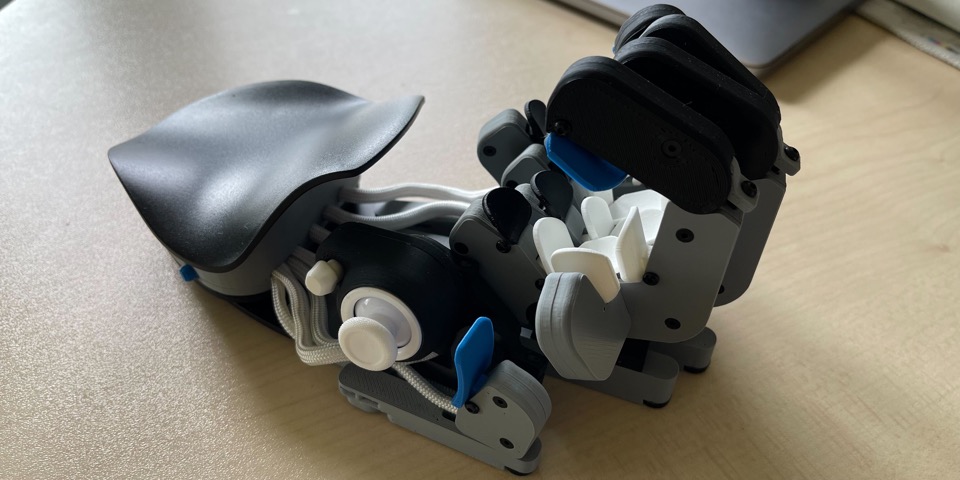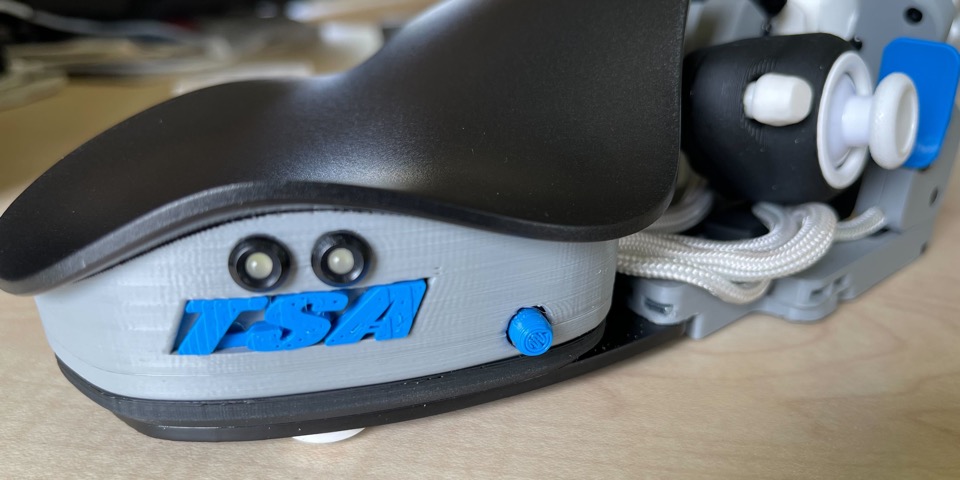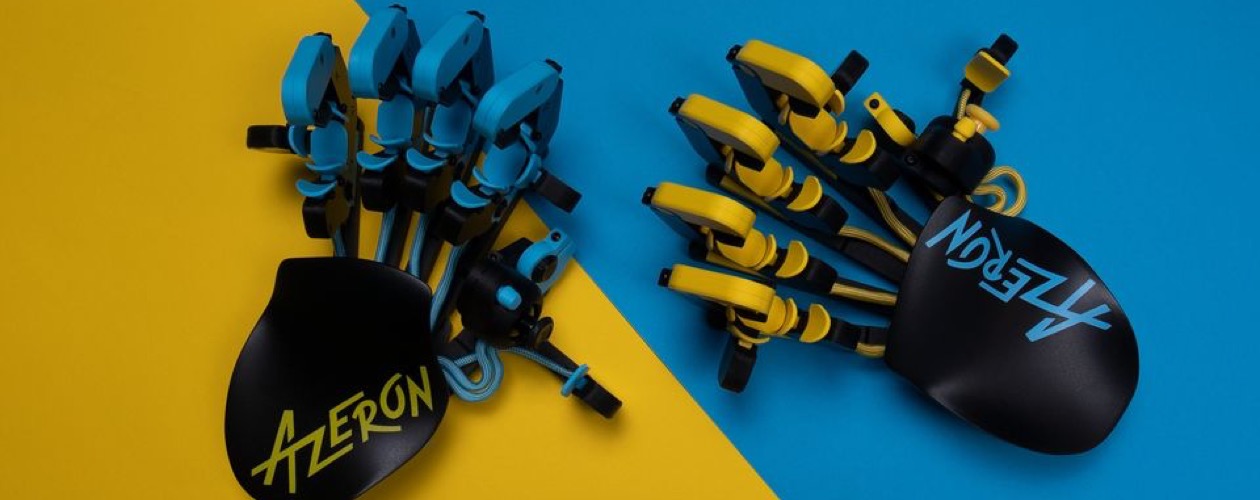We see some weird and wonderful things pass across the TSA workbench, but the Azeron Cyborg is definitely amongst the strangest, most forward-thinking PC peripherals we’ve ever tested. It’s also absolutely incredible – if you have the time and patience to get to know it.
The Azeron Cyborg perfects an obscure strand of gaming controllers that began somewhere around the Nintendo Power Glove and worked its way through to Razer’s Orbweaver. It’s a strand that has been comfortable enough to discard the ‘actually meant for writing letters’ intent of a keyboard, or the ‘two hands holding an object’ design commonplace in console controllers, and reimagine it in a way that feels utterly futuristic while making absolute sense.
First impressions are super weird. This is like unboxing the Terminator’s hand from T2 – which I suppose is partly where it got its name from. The Cyborg is chunky and feels seriously weighty when you pick it up and you can be certain that when you place it down on a surface it’s not going anywhere, aided by its batch of rubberised feet. You can also be certain that when you place your hand on it, everything about this unusual controller will become clear.

The Cyborg is designed to be used with your left hand, and you rest it on the ergonomic palm rest – there’s a flat one included as well – from where you soon discover there’s a cornucopia of inputs literally at your fingertips. In total your four fingertips can access 22 buttons, with 18 beneath your fingers and four suspended on the towers above, giving the Azeron Cyborg its claw-like appearance. I did occasionally wonder if it was going to grab a hold and drag me into the game, so think carefully before firing up Resident Evil Village or basically any horror game in your Steam library.
You’ll likely find that the Cyborg doesn’t immediately fit your hand out of the box, but Azeron knows that our mitts aren’t all the same, ensuring that the Cyborg is about as adjustable as you could want. There’s a high-quality screwdriver included in the box so that you can make all those changes without searching your house for a tiny Phillips head, and once loosened, you can alter the angle, positioning and distance of each of the towers, finger rests/inputs, and the analogue stick and additional controls that sit beneath your thumb. The personalisation even extends to a custom nameplate if you so desire – hence our lovely TSA-branded example in the pictures.

Azeron don’t really give too much advice on where you want each of the components to be, so there’s an element of trial and error to this part of the setup. However, it’s all about comfort and longevity. Feel like your little finger is aching after an hour’s play? Readjust that arm and try again. If that doesn’t help, maybe try remapping the controls? There’s so much opportunity for tweaking that you can absolutely find a set up that makes sense for your preferred games and playstyle, but it will take a while to find it.
It’s all like a little construction kit, and while there’s an exciting DIY element to it, the overall build feels solid and sturdy throughout once you’ve re-tightened the screws. It’s a lengthy process getting everything into place though, not least because you’ll sometimes find that the components don’t quite gel together in the placement you’ve chosen, or that you’re catching another input accidentally. You’ll probably find that some of your fingers will unconsciously flex when you use others too, and that’s something you need to bear in mind with your setup.

Using the Azeron Cyborg is initially like rewiring your brain. Years of WASD, Shift and Spacebar are ingrained in your psyche, so finding your way with the Cyborg isn’t as simple as moving the buttons around and getting started. The next step is remapping, and just like the physical layout, you’ll initially find yourself going through a serious period of trial and error. What might seem like a good idea at first will prove problematic in action.
I started by testing it out with Monster Hunter Rise, an action-heavy title that I’ve spent a lot of time with on PC in the last month. You can either choose for the analogue stick to behave like an analogue stick, or replicate WASD if you prefer digital inputs, but I went with analogue and never looked back.
The rest of the control placement is going to be completely down to personal choice, and you can hop in and out of the Azeron software as much as you need while you’re doing it, with two onboard profiles accessible by the chunky switch in the base. You can adjust it so that an action feels more or less effortless, whether it’s diving out of the way of a marauding Rathalos, or consuming a much-needed Max Potion. It doesn’t matter what genre you’re playing either – if it requires multiple inputs why not have them at your fingertips? There’s a wonderful tactility to each of the available keys, with just the right level of response combined to a nearly impercetible movement from your hand. It’s remarkable just how good it feels.

Azeron’s software is still in beta, but it’s got all the main functions you’re going to need and was solid through our testing. A short, sharp install from the Azeron website and an instant recognition of the device and it’s ready to go. From here you can do all the usual gubbins like update the device, as well as some more idiosyncratic ones like reducing the brightness of the profile LEDs – you’ll want to do this, they’re really bright! The key mapping is the main reason for checking in here, and while it is basic it does the job, allowing you to map all sorts of functions to the battery of buttons beneath your fingers. I’d hope for something with a bit more visual connection to the device in a later update, but you’ll manage, I’m sure.

